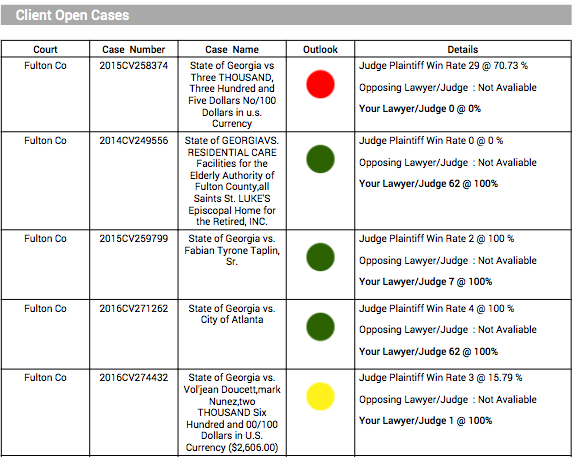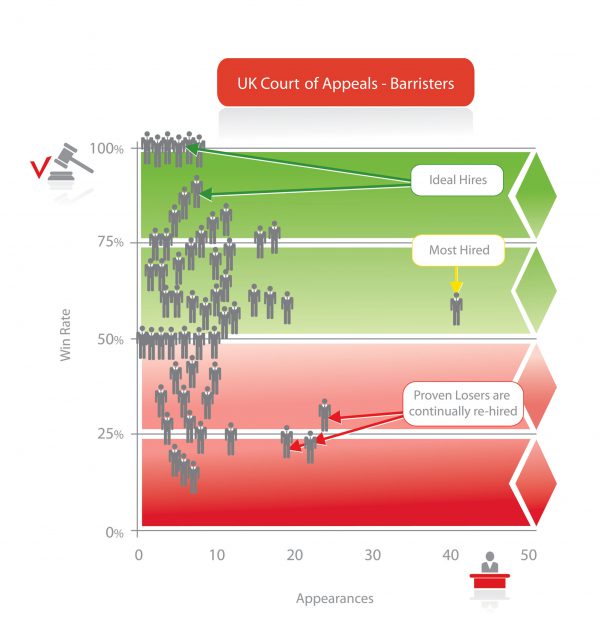5 Ways Legal Analytics Can Reduce Insurance Costs
5 Ways Legal Analytics Can Reduce Insurance Costs

This article looks at 5 ways (there are undoubtedly more) that legal analytics can help claims managers reduce their employer’s cost exposure when it comes to litigation.
A primary responsibility of insurance claims managers is ensuring that the company doesn’t overpay claimants. Execution of this responsibility is usually understood to encompass the tools of the adjuster’s art, from verifying the applicability of the policy to interviewing witnesses and consulting hospital records. In theory, the settlement figure that the claims manager ultimately negotiates is the bottom line. In practice though, many settlements are only arrived at via litigation, which substantially increases an insurer’s cost exposure thanks to legal fees.
Many adjusters already use analytics software like Colossus to more objectively evaluate bodily injury claims and determine settlements. When it comes to similar services for litigation management, insurers turn to legal analytics companies like Premonition. Here’s how legal analytics can help.
1. Sniffing out “trap” cases
Any experienced claims manager develops a strong nose for frivolous claims pretty early on in their career. From a Welfare-recipient running up the supposed value of possessions damaged by a basement flood to a personal injury suit brought by a known ambulance chaser, adjusters have seen every trick in a very thick book (the sort of book that’s been hollowed out to hide cash or drugs, perhaps). But once a stubborn claimant brings their case to court, the calculus changes, and for one reason or another, you can find yourself walking into a “trap” case. Legal analytics help you spy these out in advance by revealing:
• Whether the judge assigned to the case is predisposed toward plaintiffs
• How quickly or slowly the judge’s cases close on average
• Whether the claimant has hired a “superstar” attorney, based on their previous track record
If you know definitively that the odds are stacked against you, and there’s nothing you can do to affect the outcome, knowing when to settle is your last and best hope of mitigating the damage.
2. Adapting to unexpected changes
Legal analytics dramatically enhance your ability to predict the outcome of a case before it even takes place, but key variables often change in the midst of litigation. Re-running the numbers mid-case to account for factors such as a change of venue, or a claimant changing their attorney, helps you and your representatives adapt on the fly.
3. Finding the best lawyer for your case
Of course, the best way to enter litigation is from a position of strength. Open-case reports give you an idea of how your potential lawyer’s past performance matches up against that of the claimant’s attorney. If you’re outgunned, legal analytics can provide you a list of the top performing attorneys available to try your case.
• Which lawyers have proven success in your district?
• For your case type?
• Before the specific judge deciding your case?
If picking a lawyer based on recommendations or your own research is a bit like going on a fishing trip, legal analytics is like ordering off the menu at a fine seafood restaurant. You know the substance of what you’re getting, its style and even its price. Which leads us to our next point…
4. Controlling legal fees
Too often insurers end up spending tens of thousands more in legal fees than they would’ve had they just paid the settlement. It’s the definition of a Pyrrhic victory. By cross-referencing performance analytics with information about each potential lawyer’s billing rates, optimizing your litigation ROI is a snap.
Top legal analytics firms specialize in sussing out over-performing outliers, those lawyers that for whatever reason bill less than the average bear but provide equivalent or superior service. Moreover, you can also see which lawyers take the longest to close their cases. Sometimes it might be more economical, for example, to pay more per hour to a lawyer who races through cases in a matter of weeks than to one whose cases slog on for years.
5. Improving odds of victory
And of course, reason #5 encompasses all of the above, and then some. When a Head of Claims can head upstairs to show the bosses that their decisions are supported by the numbers, it’s a testament to their preparedness and tactical acumen. Litigation is complex, but legal analytics make it as close to simple as it’ll ever be.







